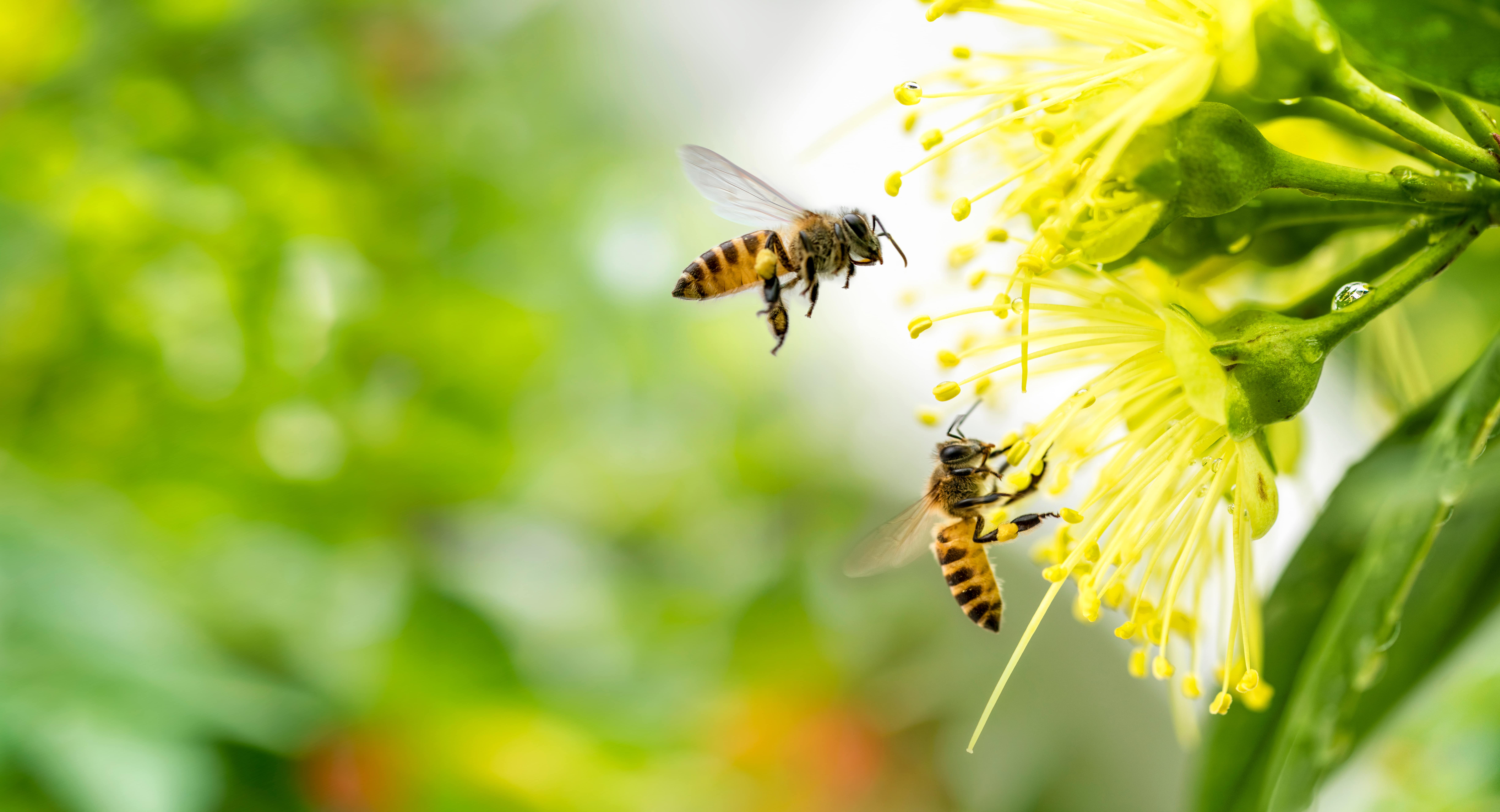Home / Blog / Bees / Carpenter Bees Unveiled: Do Carpenter Bees Sting, and How to Coexist
Carpenter Bees Unveiled: Do Carpenter Bees Sting, and How to Coexist

Scientifically reviewed by Rachel Maldonado
Carpenter Bees Unveiled: Do Carpenter Bees Sting, and How to Coexist
As extraordinary pollinators, carpenter bees play a crucial role in maintaining the health and beauty of our outdoor spaces. However, many people often misunderstand these winged insects, believing them to be dangerous pests that not only damage wood, but are incredibly aggressive, too.
So do carpenter bees sting? You might be surprised to find out the truth.
In this post, we’ll be unveiling the truth about carpenter bees – from whether or not they sting to how to coexist with them peacefully.
What are Carpenter Bees?
Carpenter bees are large, stout-bodied insects that are typically black or dark brown in color.
Depending on the species of carpenter bee, you may find that they are completely solid brown or black in color or have some yellow or white coloration. Many species are different to tell apart, and there are more than 500 species total in the carpenter bee genus! That’s one big family, to say the least.
One thing that all of these species have in common is that the females also have a stinger, which they rarely use unless provoked. Another one of the most distinguishing physical characteristics of carpenter bees is their shiny, hairless abdomen. They’re often mistaken for bumblebees, but their habits are quite different.
Carpenter bees are solitary insects, and they often make their homes in wooden structures such as deck railings, eaves, and siding. They tunnel into the wood to create nests where they lay their eggs. This can lead to structural damage over time, as the bees continue to tunnel and expand their nests. The good news is that they aren’t nearly as destructive as termites, the other wood-destroying pest we love to hate.
Of course, carpenter bees aren’t always destructive. In fact, they can serve as effective pollinators for a variety of plants. They’re important food sources for birds and other wildlife. So, while it’s important to keep an eye on their nesting habits, it’s also important to recognize their role in the ecosystem.
Do Carpenter Bees Sting?
To answer this question, first know that there are differences between male and female carpenter bees. The males are often seen hovering around nests, but they do not have a stinger and are thus unable to sting. The females, on the other hand, do have a stinger, but they are not particularly aggressive and will only sting if provoked or if they feel threatened.
When a female carpenter bee stings, she is defending her nest or herself. However, the sting is relatively weak – at worst, it may cause mild pain and redness, but it is not typically dangerous to humans.
That being said, if you do happen to be stung by a female carpenter bee, it is best to clean the area with soap and water and apply a cold compress to reduce swelling. If you experience an allergic reaction, seek medical attention immediately.
So, what should you do when encountering a carpenter bee? Ideally, just leave them alone. These gentle giants play an important role in pollinating plants and are actually beneficial to have around. If they are causing damage to your wood structures, contact a pest control professional who can safely remove them and relocate them to a more suitable nesting area.
How to Coexist with Carpenter Bees
To discourage carpenter bees from setting up shop in your home, you want to make your outdoor area less appealing than other sites where they could potentially build nests instead.
Avoid using softwoods like cedar and pine in decks, pergolas, or other structures as these are common targets for carpenter bees. Using hardwoods will make it harder for carpenter bees to burrow into your home. And don’t forget to paint or seal any wood surfaces to deter these insects!
If you already have carpenter bees in your home, we’ve got some tips to minimize the damage they cause. First, use wood fillers or sealers to close off the holes carpenter bees have burrowed into your home. You can also install screens or mesh over existing holes to prevent further infestations.
Another approach is to use pesticides, but this option can also harm beneficial insects like honey bees and butterflies. If you do use pesticides, make sure to follow the product label instructions and avoid applying them while other pollinators are active.
Carpenter bees are attracted to wood, so offering alternative nesting options may help divert them from your home. Consider installing a bee hotel, which provides a safe place for carpenter bees and other solitary bees to nest. These hotels can be created with materials like bamboo, wood blocks, and paper straws.
Key Takeaways
Remember – carpenter bees are unlikely to sting unless provoked, and they also play a crucial role in pollinating crops and plants.
Protecting carpenter bees is not just a matter of safety. It’s also about preserving our ecosystem. By providing them with a safe and suitable environment, we can make sure that they continue to thrive and do their job out in nature.
If you’re concerned about carpenter bees in your area, or if you need professional help to manage other pest problems in your home or business, Hawx Pest Control is here for you. Our team of experts has years of experience in dealing with all kinds of pests, from ants to rodents, and we use safe and effective methods to solve any pest issue you might be experiencing.
Join our family of satisfied customers today!
Learn more about the pests in this article
Related Articles

















